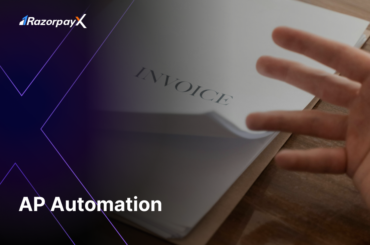Table of Contents
What is Procurement Software?
Procurement software is a digital tool that helps businesses automate and streamline their purchasing processes. It is a command centre for everything related to acquiring goods and services, from submitting requests to paying invoices.
Businesses with digitized procurement processes have a significant advantage over businesses with manual processes. Digital-first businesses are better positioned to achieve their financial goals, improve operational efficiency, and gain a competitive edge.
RazorpayX Source to Pay is a robust procurement software from Razorpay, that streamlines and automates the entire purchase process, from requisitioning goods and services to managing vendors and making payments.
How Does Procurement Software Work?
Procurement software automates and streamlines the entire process a business goes through to acquire goods and services, often referred to as the source-to-pay (S2P) cycle.
1. Requisitioning and Approval:
- Employees submit purchase requests: Employees can easily submit requests for goods or services they need through the software. This can be done electronically, eliminating paper forms and manual data entry.
- Approval workflows: The software can route requests for approval through designated managers or departments based on pre-defined rules. This ensures proper authorization and spending control.
2. Sourcing and Negotiation:
- Supplier management: The software stores information about vendors, including past performance, pricing data, and contracts. This allows for easy comparison and selection.
- E-sourcing: Some systems offer features for electronic sourcing, where businesses can send requests for proposals (RFPs) to multiple suppliers and receive bids electronically. This fosters competition and helps secure better deals.
3. Purchase Order Generation and Management:
- Automated PO generation: Once a supplier is chosen, the software can automatically generate a purchase order (PO) with all the necessary details like item description, quantity, price, and delivery terms.
- PO tracking and communication: The software allows for tracking the status of purchase orders and facilitates communication with suppliers regarding deliveries or any changes.
4. Receiving and Invoice Management:
- Matching invoices to POs: When goods are received, the software can be used to verify that they match the corresponding purchase order. This helps prevent errors and ensures accurate invoice processing.
- Automated invoice processing: Some systems can automate invoice processing by matching received items and prices with the PO and automatically routing invoices for approval.
5. Payment Processing:
- Streamlined payments: The software can integrate with existing payment systems to facilitate electronic payments to suppliers, expediting the process and improving cash flow management.
Read more: Workflow Automation
6. Reporting and Analytics:
- Spend analysis: Procurement software provides valuable data and reports on spending patterns, supplier performance, and other key metrics. This data can be used to identify areas for cost savings and improve overall procurement strategies.
Additional Benefits:
- Improved compliance: The software can ensure adherence to company purchasing policies and regulations.
- Enhanced collaboration: Digital workflows can facilitate communication and collaboration between internal teams and suppliers.
- Risk mitigation: Features like supplier performance tracking and contract management can help mitigate risks associated with procurement activities.
Read more: Procurement Analytics
Components of Procurement Software
Procurement is a complex function, and the software that automates the process must be multidimensional and adaptable. Here are the main components of a robust procurement software.
Requisition and approval workflows allow employees to submit requests and managers to grant authorisation electronically.
Sourcing features help find and compare vendors through features like e-sourcing tools. Once a supplier is chosen, the software automates purchase order generation and tracks the order status.
Receiving modules verify that delivered goods match purchase orders, and some systems can even automate invoice processing for faster payments.
Reporting and analytics provide valuable insights into spending habits and supplier performance, empowering businesses to make better procurement decisions.
With tools like RazorpayX Source to Pay, all these modules are integrated into one central dashboard, with custom approvals for different stakeholders.
Benefits of Procurement Software
Businesses that leverage procurement software reap a multitude of benefits, transforming their purchasing processes from cumbersome to efficient and strategic. Here are some key advantages:
-
Enhanced Efficiency: Procurement software automates repetitive tasks like purchase order generation and approval routing, freeing up employees for more strategic work. This significantly reduces procurement cycle times and boosts overall team productivity.
-
Cost Savings Powerhouse: These digital systems empower better spend analysis, pinpointing areas for cost reduction. Features like e-sourcing and supplier negotiation tools can help businesses secure better pricing and terms from vendors.
Read more: Strategic Cost Management
-
Accuracy on Autopilot: Manual data entry is minimized, leading to fewer errors and inconsistencies. This improves data quality and allows for better decision-making based on reliable information.
-
Transparency Reigns Supreme: A digital procurement platform provides a clear view of the entire purchasing process, from requisition to payment. This transparency fosters accountability and reduces the risk of fraud or misconduct.
-
Stronger Supplier Relationships: Digitized systems streamline communication and collaboration with suppliers. This helps build stronger relationships and fosters improved overall supply chain performance.
-
Data-Driven Decision Making: Procurement software provides valuable data and insights that can be used to optimize sourcing strategies, negotiate better contracts, and manage risk more effectively.
-
Compliance Made Easy: Digital workflows can be designed to ensure adherence to company policies and regulations. This reduces the risk of non-compliance and associated penalties.
-
Improved Cash Flow: Streamlined payments through the software can expedite the process and improve business cash flow management.
Read more: Enterprise Resource Planning Software
How to Choose the Best Procurement Software?
Choosing the right procurement software for your business can be challenging – especially with the complex nature of the procurement process and the multitude of solutions available.
Here’s a helpful Buyer’s Guide to refer to when deciding how to automate your supply chain management.
Related Read: What is the Difference Between Purchase Orders and Invoices?
FAQs
What software is used in procurement?
Procurement software options are vast, but some popular choices include SAP Ariba, Coupa, and Oracle Procurement Cloud. These offer features like e-sourcing, supplier management, and invoice processing. The best fit depends on your business size, industry, and specific procurement needs.
How to automate procurement?
Automate procurement by pinpointing repetitive tasks. Choose software that tackles those tasks and fits your business. Implement the software and train employees for a smooth switch. Monitor performance and optimize for continuous improvement.
How do businesses manage procurement processes?
Businesses traditionally manage procurement through a multi-step process, often on paper. This includes raising purchase requests, soliciting quotes from vendors, negotiating contracts, and managing invoices. For better efficiency, companies turn to procurement software that automates tasks, streamlines approvals, and offers valuable data for informed decision-making.
What are the best procurement softwares in India?
Choosing the "best" procurement software depends on your company's needs. Some solutions are best suited for manufacturing companies with specific procurement processes and needs. Solutions like RazorpayX Source to Pay can be custom-fit for any vertical: from healthcare to e-commerce.
What is the difference between ERP and procurement software?
ERP is a broad business suite managing everything from finance to HR, and may include a procurement module. Procurement software focuses solely on streamlining purchasing, from requesting supplies to paying invoices. Imagine an ERP as a multi-tool, while procurement software is a specialized surgical tool for a specific task.





